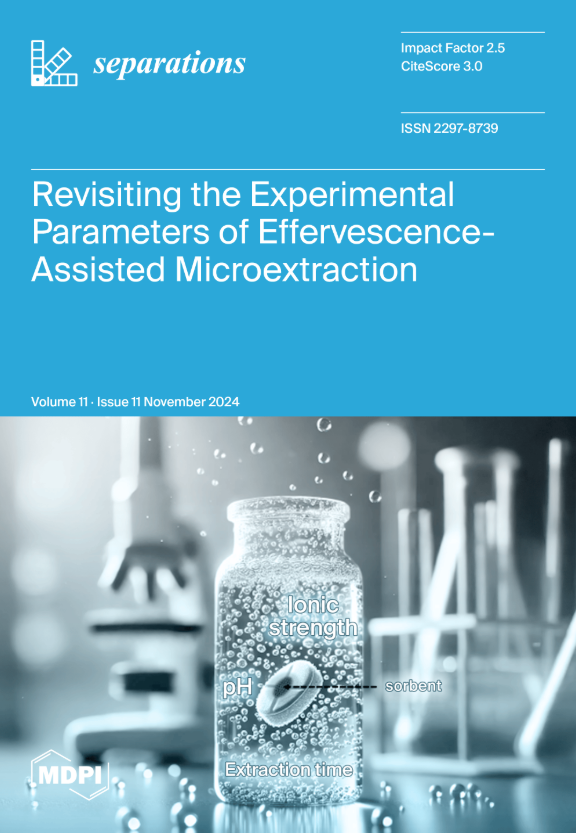Comprehensive Chemical Characterization of Qingkailing Capsules by Ultra-High-Performance Liquid Chromatography Combined with Fourier Transform Ion Cyclotron Resonance Mass Spectrometry
IF 2.7
4区 工程技术
Q3 CHEMISTRY, ANALYTICAL
引用次数: 0
Abstract
Qingkailing capsules are a classic traditional Chinese medicine prescription with remarkable clinical effects for the treatment of fevers. However, the chemical components of Qingkailing capsules are still unclear. To obtain and characterize the chemical profile of Qingkailing capsules, the present study applied a rapid, accurate, and sensitive method using ultra-high-performance liquid chromatography combined with Fourier transform ion cyclotron resonance mass spectrometry (UHPLC-FT-ICR-MS) to perform a comprehensive chemical characterization of Qingkailing capsules. Leveraging the high separation speed and good separation of UHPLC, the accurate mass data (within 5 ppm) and fragment ions, a total of 276 compounds, including 67 flavonoids and their glycosides, 52 organic acids, 75 terpenoids, 23 steroids, 22 phenylpropanoids, and 37 other compounds, were unambiguously or tentatively identified. This comprehensive analysis of the chemical components of Qingkailing capsules contributes to the quality evaluation and provides a scientific and reasonable basis for further study of prototype components and metabolites in vivo and pharmacological research, ultimately facilitating the advancement of Qingkailing capsules for further development and the therapeutic use of Qingkailing capsules in clinical applications.超高效液相色谱法结合傅立叶变换离子回旋共振质谱法对清开灵胶囊进行综合化学表征
清开灵胶囊是治疗发热的经典中药方剂,临床疗效显著。然而,清开灵胶囊的化学成分尚不清楚。为获得清开灵胶囊的化学特征并对其进行表征,本研究采用超高效液相色谱-傅里叶变换离子回旋共振质谱联用(UHPLC-FT-ICR-MS)快速、准确、灵敏的方法对清开灵胶囊进行了全面的化学表征。利用UHPLC分离速度快、分离效果好、质量数据准确(5ppm以内)和片段离子,共鉴定出276个化合物,包括67个黄酮类化合物及其苷类化合物、52个有机酸类化合物、75个萜类化合物、23个类固醇化合物、22个苯丙类化合物和37个其他化合物。通过对清开灵胶囊化学成分的全面分析,有助于进行质量评价,为进一步开展原型成分和体内代谢物的研究及药理研究提供科学合理的依据,最终促进清开灵胶囊的进一步开发和临床治疗应用。
本文章由计算机程序翻译,如有差异,请以英文原文为准。
求助全文
约1分钟内获得全文
求助全文
来源期刊

Separations
Chemistry-Analytical Chemistry
CiteScore
3.00
自引率
15.40%
发文量
342
审稿时长
12 weeks
期刊介绍:
Separations (formerly Chromatography, ISSN 2227-9075, CODEN: CHROBV) provides an advanced forum for separation and purification science and technology in all areas of chemical, biological and physical science. It publishes reviews, regular research papers and communications. Our aim is to encourage scientists to publish their experimental and theoretical results in as much detail as possible. There is no restriction on the length of the papers. The full experimental details must be provided so that the results can be reproduced. There are, in addition, unique features of this journal:
Manuscripts regarding research proposals and research ideas will be particularly welcomed.
Electronic files and software regarding the full details of the calculation and experimental procedure, if unable to be published in a normal way, can be deposited as supplementary material.
Manuscripts concerning summaries and surveys on research cooperation and projects (that are funded by national governments) to give information for a broad field of users.
The scope of the journal includes but is not limited to:
Theory and methodology (theory of separation methods, sample preparation, instrumental and column developments, new separation methodologies, etc.)
Equipment and techniques, novel hyphenated analytical solutions (significantly extended by their combination with spectroscopic methods and in particular, mass spectrometry)
Novel analysis approaches and applications to solve analytical challenges which utilize chromatographic separations as a key step in the overall solution
Computational modelling of separations for the purpose of fundamental understanding and/or chromatographic optimization
 求助内容:
求助内容: 应助结果提醒方式:
应助结果提醒方式:


